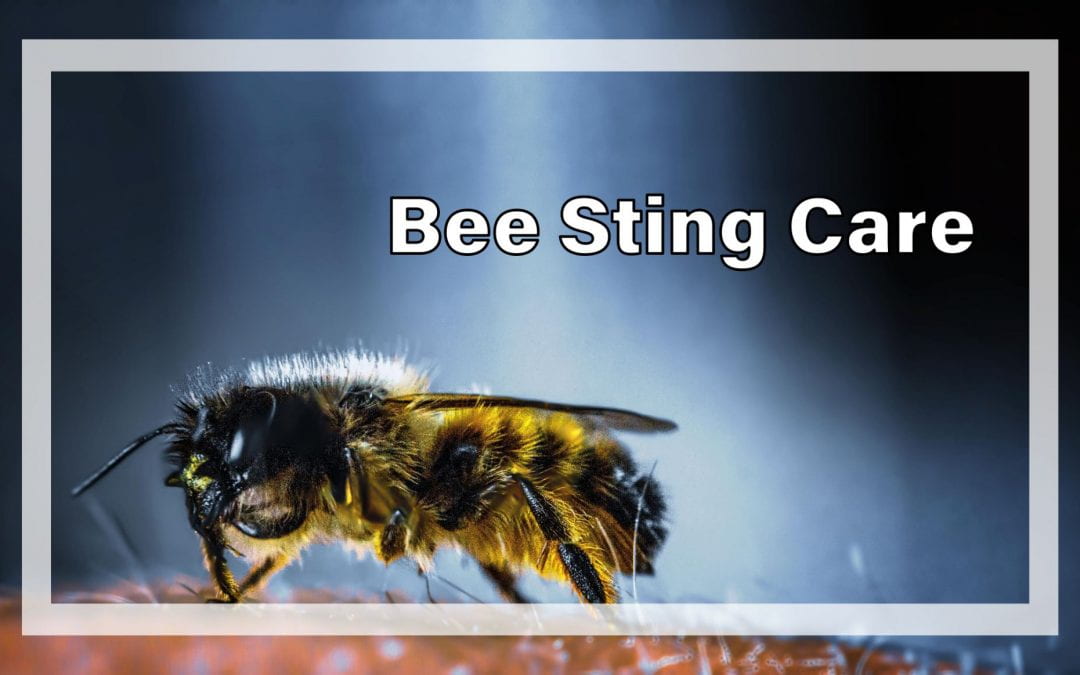Honey Bees, and bees in general, often get a bad rap because of their defense mechanism: stinging. However, foraging bees rarely sting people, it’s when you are near the hive, and posing a threat that bees will begin to sting a person actively. A honey bee will never go out of its way to sting someone, because the act of doing so will kill it, as the stinger and part of its abdomen get removed after the action is completed. While painful, a sting is usually just a nuisance unless you are allergic to the apitoxin. So remember, a bee is just defending its home from a perceived threat!
If you or someone you know is stung and has an allergy, the best thing to do is call emergency services. Otherwise, move away from the hive, as bee stings release pheromones that draw other bees to swarm and sting the threat away. Afterward, remove the stinger as quickly as possible, because it can continue to pump apitoxin into your body for up to 10 minutes after the initial sting. This can be done by running a credit card, or something similar, over the site to dislodge the stinger. Then wash the area of the stinger and disinfect the wound to prevent infection. Apply ice and take an antihistamine to reduce swelling and itching, and if it has been more than 10 years since you have received a tetanus booster, make an appointment to get a followup booster in the next few years.
Do you or someone you know keep bees? We want to hear your story! Pace University’s Pace Docs crew is in the process of producing a documentary about Urban Beekeeping, the latest in a series of award-winning environmentally and culturally relevant documentaries from our department. Contact us at paceudocs@gmail.com. And follow us on Instagram, Facebook, Twitter, and Tik Tok for more content!

